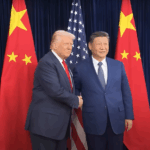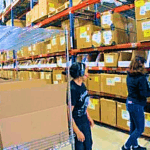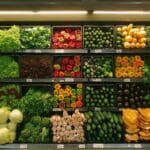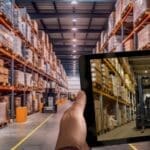Non classé
Free Download: Transportation Management Systems (TMS) Executive Summary – Optimize Freight, Routing, and Cost Control with Modern TMS Platforms
Published
3 semaines agoon
By

Logistics Viewpoints is offering a free executive summary of its market research report on Transportation Management Systems (TMS), a core solution for managing today’s increasingly complex logistics and freight operations. As companies seek to reduce transportation costs, improve routing efficiency, and respond to market volatility, TMS platforms offer the visibility and control needed to succeed.
About the Full Report
The full TMS study examines the evolving role of transportation technologies in streamlining freight planning and execution. It explores standard features such as carrier selection, route optimization, freight auditing, and cost tracking. The report also addresses external market pressures, including fuel price volatility and supply chain disruptions, and positions TMS platforms within the broader supply chain software landscape.
The executive summary includes a detailed table of contents and overview of findings, offering stakeholders a clear snapshot of what to expect from the full report.
Download the Executive Summary
This free executive summary is an ideal resource for supply chain and logistics leaders exploring how TMS platforms can strengthen their transportation strategy and enable more agile operations.
Download the TMS Executive Summary
Explore All Available Executive Summaries
The post Free Download: Transportation Management Systems (TMS) Executive Summary – Optimize Freight, Routing, and Cost Control with Modern TMS Platforms appeared first on Logistics Viewpoints.
You may like
Non classé
Supply Chain and Logistics News October 27th- 30th 2025
Published
3 jours agoon
31 octobre 2025By

The global industrial supply chain and economic landscape are undergoing a rapid, technology-driven transformation, set against a backdrop of complex geopolitical maneuvering. This week’s developments underscore the fundamental reshaping of critical sectors, from energy to logistics. Geopolitical tensions saw a temporary easing with the Trump-Xi meeting, yielding a soybean deal for U.S. supply chains, while the U.S. and Japan simultaneously signed a framework to secure critical mineral supplies, strategically reducing reliance on China. Domestically, the immense power demands of Artificial Intelligence are rewriting the energy grid’s future, exemplified by Google and NextEra’s plan to revive a decommissioned Iowa nuclear facility. Meanwhile, industry leaders like Bentley Systems are focusing on embedding AI and digital twins for ‘continuous intelligence’ in infrastructure, even as rising shipping costs—now a global market of over $11 trillion—force companies to adopt core optimization strategies like cartonization to safeguard profit margins.
Trump’s- Xi Meeting Produces Temporary Stabilization, Soybean Deal for Midwest Supply Chains
President Donald Trump and President Xi Jinping met in Busan this week for a 90-minute summit that resulted in a temporary easing of trade tensions between the United States and China. While not a comprehensive agreement, the outcomes mark a shift in tone and the beginning of what U.S. Treasury Secretary Scott Bessent described as a “framework for broader cooperation.”The Trump-Xi meeting delivered a short-term de-escalation of specific trade and security tensions, notably in agriculture and pharmaceuticals. For U.S. supply chains, the soybean purchase agreement provides meaningful clarity for producers and exporters. However, on core structural issues, such as technology access, industrial policy, and critical materials, the agreement amounts to a pause rather than a resolution. Whether this develops into a stable trade framework will depend on progress over the next several months.
Google and NextEra Energy To Revive Decommissioned Iowa Nuclear Facility
NextEra Energy and Google announced a partnership to restart Iowa’s only Nuclear power facility, which was decommissioned in 2020. Duane Arnold Energy Center represents a significant transaction that underscores the intense energy demands generated by the proliferation of Artificial Intelligence (AI) data centers. This agreement is a strategic move for Google, securing a 25-year Power Purchase Agreement (PPA) for the output of the 615-megawatt nuclear facility, which is slated to be operational by early 2029 pending regulatory approval. The Central Iowa Power Collective has also agreed to purchase the surplus electricity leftover. The collaboration also includes a joint effort to explore new nuclear generation technologies nationwide, reinforcing the view that the technology sector will be a primary driver and financier of the next era of nuclear energy development. Ultimately, the Duane Arnold restart is not merely a regional development; it is a clear indicator that the economics of AI have fundamentally altered the industrial energy landscape, necessitating the revival of high-capacity baseload generation.
How Bentley Systems’ AI-Driven Innovations, Open Collaboration, and Digital Twin Technologies
The central takeaway from Bentley Systems’ Year in Infrastructure event in Amsterdam was that infrastructure and technology are converging around one question: how to make intelligence continuous. Bentley’s answer is to embed that intelligence directly within the infrastructure lifecycle.“When we get this right,” Marsh said, “the work we do will be an intangible legacy for the next generation.” Cumins closed with a clear statement of purpose: “The infrastructure of the future won’t just be designed. It will learn.”
The discussion was not about replacing people but about giving them better tools. AI can extend the reach of human expertise, improving accuracy, accelerating design cycles, and creating systems that can adapt as conditions change. Bentley’s theme from Amsterdam was pragmatic. Context is the foundation of modern infrastructure. The organizations that master it through data integrity, open standards, and collaboration will define how the world builds, connects, and endures in the decades ahead.
Shipping costs are climbing faster than ever, and they’re hitting profit margins hard. According to a 2024 report by Statista, the global shipping and logistics market has surpassed $11 trillion, with transportation costs making up more than half of total logistics expenses. For U.S. companies, that means every mile, inch, and ounce matters more than ever. Freight and parcel carriers such as FedEx, UPS, and USPS have adopted dimensional weight (DIM) pricing, meaning you’re charged not just for what a package weighs, but for how much space it takes up. Add fuel surcharges, residential delivery fees, and penalties for oversized packaging, and even small inefficiencies can turn into major budget drains. For many U.S. distribution centers, whether shipping retail goods, industrial parts, or e-commerce orders, the key takeaway is clear. Cartonization pays for itself. By cutting wasted space, standardizing packaging, and optimizing workflows, companies can save money, improve sustainability, and enhance customer satisfaction, all while maintaining or even improving fulfillment speed.
As shipping costs continue to rise and customer expectations grow, integrating cartonization and packing optimization tools is no longer a “nice-to-have.” It’s a core component of smart, resilient logistics operations in 2025 and beyond.
US, Japan Sign Framework for Critical Mineral Supply
The recently signed framework between the United States and Japan marks a significant strategic maneuver in the global race for secure supply chains. This non-binding agreement is explicitly designed to reduce both nations’ reliance on China—the current dominant producer of these essential raw materials—by fostering collaborative investment in the mining, separation, and processing of critical minerals and rare earths. By establishing a joint Rapid Response Group and committing to coordinated efforts on stockpiling and recycling technologies, Washington and Tokyo are not just addressing a logistical challenge; they are prioritizing supply chain resilience as a critical component of national and economic security in a fragmenting geopolitical landscape.
Song of the week:
The post Supply Chain and Logistics News October 27th- 30th 2025 appeared first on Logistics Viewpoints.
Non classé
U.S. – China Trade: Trump – Xi Meeting Produces Temporary Stabilization, Soybean Deal Key for Midwest Supply Chains
Published
3 jours agoon
30 octobre 2025By

President Donald Trump and President Xi Jinping met in Busan this week for a 90-minute summit that resulted in a temporary easing of trade tensions between the United States and China. While not a comprehensive agreement, the outcomes mark a shift in tone and the beginning of what U.S. Treasury Secretary Scott Bessent described as a “framework for broader cooperation.”
Agricultural Commitments
The most specific commitment came in the agricultural sector. According to Bessent, China will purchase a minimum of 25 million metric tons of U.S. soybeans annually for the next three years. In addition, other nations are expected to acquire an additional 19 million metric tons during the same period. Initial purchases, starting with 12 million metric tons from this year’s harvest, have already been confirmed by China’s state-owned buyer COFCO.
This represents a critical development for U.S. farmers, particularly in the Midwest, following multiple years of uncertain market access and erratic pricing conditions.
Supply Chain Impact:
Increased volumes through Gulf and Pacific Northwest export terminals are expected in the near term.
Domestic logistics firms may face tighter seasonal capacity as shipments ramp up.
Input suppliers, seed, fertilizer, and farm equipment, are expected to benefit from improved forward purchasing confidence.
Fentanyl and Tariffs
In exchange for Beijing’s commitment to further reduce the export of fentanyl precursor chemicals, the United States has agreed to cut its fentanyl-related tariffs on Chinese goods from 20 percent to 10 percent. Bessent described this as part of a targeted effort to address the domestic fentanyl crisis, which remains a significant public health issue in the United States.
The U.S. will also suspend a pending rule that would have expanded the Commerce Department’s Entity List to include additional Chinese firms. The gesture is intended to signal restraint rather than a change in long-term policy.
Supply Chain Impact:
Chemical and pharmaceutical supply chains may experience modest cost relief due to the tariff cut.
Export controls and scrutiny on Chinese technology firms remain in place, though no new firms will be added for now.
Rare Earths and Critical Materials
China has agreed to suspend its recently imposed export controls on rare-earth materials for one year. These materials are essential for a range of industries, including defense, clean energy, and electronics manufacturing.
Supply Chain Impact:
Short-term relief for U.S. and allied industries dependent on lanthanides and other critical inputs.
However, no indication was given that China plans to lift restrictions permanently or expand rare-earth output quotas.
Technology and TikTok
China has approved a framework for the transfer of TikTok’s U.S. operations to a new corporate structure. The agreement involves American investors holding six out of seven board seats, with ByteDance retaining less than a 20 percent ownership stake. The algorithm will be operated under U.S. security supervision.
No final implementation date has been confirmed, but Bessent indicated that progress should be visible “in the coming weeks and months.”
Supply Chain Impact:
Minimal immediate effect on physical supply chains.
Digital infrastructure providers and content oversight entities may see increased activity as the transition unfolds.
Energy Cooperation and Nuclear Strategy
In a development that was not anticipated by U.S. negotiators, Xi Jinping expressed unilateral interest in a U.S. pipeline project in Alaska. No formal proposal has been submitted.
Separately, Bessent acknowledged that the U.S. currently trails China in nuclear power development, but stated that plans are underway to scale up domestic capacity. The Biden administration had also pursued advanced nuclear initiatives prior to the current administration’s term, but most have remained in pilot stages.
Supply Chain Impact:
Potential future activity in nuclear component supply chains, particularly for reactor fuel and structural materials.
No immediate infrastructure commitments were announced.
Market and Policy Outlook
Reactions from financial markets were muted. Analysts noted that while the tone was constructive, few substantive changes have been finalized. According to commentary from Goldman Sachs, the meeting produced “expected outcomes, but little beyond that.” Some initiatives, such as TikTok and rare earths, appear to be tactical delays rather than long-term resolutions.
Trump indicated plans to visit China in April 2026 to pursue a broader trade agreement. Both sides have agreed to continue discussions, with Bessent suggesting that the coming months will determine whether temporary arrangements can evolve into formal trade policy changes.
Conclusion
The Trump-Xi meeting delivered a short-term de-escalation of specific trade and security tensions, notably in agriculture and pharmaceuticals. For U.S. supply chains, the soybean purchase agreement provides meaningful clarity for producers and exporters. However, on core structural issues, such as technology access, industrial policy, and critical materials, the agreement amounts to a pause rather than a resolution. Whether this develops into a stable trade framework will depend on progress over the next several months.
The post U.S. – China Trade: Trump – Xi Meeting Produces Temporary Stabilization, Soybean Deal Key for Midwest Supply Chains appeared first on Logistics Viewpoints.
Non classé
High Impact Ways to Optimize Your Shipping Operations: Empower Your Team, Exceed Expectations, and Transform Challenges into Opportunities
Published
4 jours agoon
30 octobre 2025By

Shipping costs are climbing faster than ever, and they’re hitting profit margins hard. According to a 2024 report by Statista, the global shipping and logistics market has surpassed $11 trillion, with transportation costs making up more than half of total logistics expenses. For U.S. companies, that means every mile, inch, and ounce matters more than ever.
Freight and parcel carriers such as FedEx, UPS, and USPS have adopted dimensional weight (DIM) pricing, meaning you’re charged not just for what a package weighs, but for how much space it takes up. Add fuel surcharges, residential delivery fees, and penalties for oversized packaging, and even small inefficiencies can turn into major budget drains.
The good news? Smart, software-driven optimization tools can dramatically reduce shipping costs without slowing fulfillment speed or sacrificing customer satisfaction. By leveraging data, automation, and integration between warehouse systems, companies can streamline how they pack, plan, and ship orders.
Here are some high-impact ways to optimize your shipping operations and achieve measurable savings.
Pack Smarter with Cartonization Engines
One of the most effective tools for cutting shipping spend is cartonization, to put it simply, the process of determining the best way to pack items into shipping cartons. A cartonization engine uses algorithms to analyze order contents and select the most space-efficient box configuration.
Instead of relying on manual decisions at the packing station, the system calculates how items fit together based on dimensions, weight, stacking rules, and even product fragility. It can simulate literally millions of potential packing combinations in seconds to find the best fit.
For example, an e-commerce apparel retailer might ship orders ranging from a single T-shirt to a mix of shoes, jackets, and accessories. Without cartonization, packers often choose oversized boxes “just to be safe,” resulting in wasted space and higher DIM charges. By using a cartonization engine, the system automatically selects the smallest suitable box while maintaining product protection.
The results speak for themselves. Cartonization can reduce freight costs by 10% to 25%, depending on order complexity and shipping zones. Beyond cost savings, it also improves cube utilization, making sure every cubic inch of trailer space is used efficiently, which is especially critical for high-volume shippers or third-party logistics providers (3PLs).
Eliminate the Cost of “Shipping Air”
Every half-empty box your warehouse sends out is wasted money. When multiplied across hundreds or thousands of daily shipments, the cost of shipping air adds up shockingly fast.
Modern shipping optimization software can prevent this by evaluating product dimensions, fragility, and compatibility to eliminate unnecessary voids, while still ensuring items are well protected. These systems can even recommend alternate packing materials or configurations to minimize filler use.
For instance, a parts distributor might discover through analytics that they’re using filler in 40% of their shipments simply because their packers don’t have smaller boxes available at the workstation. After integrating cartonization with their warehouse software, they reduce filler use by 30% and fit 15% more packages per truckload.
Better space utilization doesn’t just lower costs; it also reduces your carbon footprint. Overpacking and excessive filler materials (bubble wrap, foam, paper) contribute to unnecessary waste and higher emissions. More and more American consumers (and B2B customers) expect sustainability-minded practices from the companies they buy from. Optimizing packaging is a visible, measurable way to demonstrate environmental responsibility while improving efficiency.
According to the Environmental Protection Agency (EPA), packaging waste accounts for nearly 30% of all U.S. municipal solid waste. Eliminating empty space in shipments is one of the most practical ways companies can both save money and support sustainability goals. Amazon’s flexible packaging system, for example, uses machine learning and automation to create paper-based containers that are custom-sized to each order. By tailoring the package to the exact dimensions of the items, Amazon reduces excess material, minimizes shipping air, and lowers transportation costs and environmental impact.
Standardize Carton Sizes with Software Support
At first glance, standardizing carton sizes may sound counterintuitive. After all, doesn’t flexibility mean more options? But when paired with the right software, having a standardized set of box sizes actually improves efficiency across the board.
Warehouse and Transportation Management Systems (WMS and TMS) can analyze historical order data and SKU dimensions to identify the optimal set of box sizes for your specific operation. Instead of stocking dozens of different carton options, you might narrow it down to six or eight sizes that accommodate 95% of your orders.
With fewer box types, packers make faster, more consistent decisions. Training new employees becomes easier, pallet stacking becomes more predictable, and trailer loading improves due to more uniform carton dimensions.
According to the Packaging Machinery Manufacturers Institute (PMMI), using software to standardize and automate box selection can cut packaging costs by 12% to 18%.
The benefits don’t stop there. When cartonization is integrated with your WMS or Warehouse Execution System (WES), it enables optimization far earlier in the fulfillment process—before picking even begins.
Here’s what that looks like in practice:
Optimized pick paths – Knowing carton sizes ahead of time allows for smarter order grouping and sequencing.
Improved labor efficiency – Workers pick directly into the correct carton, eliminating re-packing.
Lower shipping costs – Pre-optimized boxes avoid DIM surcharges and minimize oversized packaging.
Tighter trailer loading – Accurate carton sizing leads to denser, more efficient shipments.
Making It Work: Integrating Cartonization with Your WMS or WES
As e-commerce and omnichannel fulfillment accelerate, distribution centers are under constant pressure to fulfill faster and cheaper. To meet these demands, leading operations are moving cartonization decisions upstream—into the wave planning stage.
Traditionally, packaging decisions were made late in the process, often at the packing station. By that point, it’s too late to influence earlier stages such as picking, slotting, or trailer planning. When cartonization is integrated with your WMS or WES, the system can use order data to pre-plan the most efficient cartons, routes, and labor assignments.
This shift represents more than just a technical improvement; it can be a strategic transformation. A wholesale distributor in the Northeast United States, implemented cartonization alongside a dynamic work optimization solution and their WMS. The result: optimized packing and shipping, with a 16% reduction in shipping costs; reduced worker travel time, and more than 20% productivity gains.
For many U.S. distribution centers, whether shipping retail goods, industrial parts, or e-commerce orders, the key takeaway is clear. Cartonization pays for itself. By cutting wasted space, standardizing packaging, and optimizing workflows, companies can save money, improve sustainability, and enhance customer satisfaction, all while maintaining or even improving fulfillment speed.
As shipping costs continue to rise and customer expectations grow, integrating cartonization and packing optimization tools is no longer a “nice-to-have.” It’s a core component of smart, resilient logistics operations in 2025 and beyond.
By Evan Danis, Corporate Marketing Manager, Lucas Systems
Since March 2022, Evan has led Lucas Systems’ strategic marketing initiatives, overseeing the development of targeted advertising and high-value content for Lucas System. Evan’s responsibilities include driving brand positioning, thought leadership, and customer engagement across digital and physical channels.
The post High Impact Ways to Optimize Your Shipping Operations: Empower Your Team, Exceed Expectations, and Transform Challenges into Opportunities appeared first on Logistics Viewpoints.


Supply Chain and Logistics News October 27th- 30th 2025

U.S. – China Trade: Trump – Xi Meeting Produces Temporary Stabilization, Soybean Deal Key for Midwest Supply Chains

High Impact Ways to Optimize Your Shipping Operations: Empower Your Team, Exceed Expectations, and Transform Challenges into Opportunities
Ex-Asia ocean rates climb on GRIs, despite slowing demand – October 22, 2025 Update

Walmart and the New Supply Chain Reality: AI, Automation, and Resilience
Unlocking Digital Efficiency in Logistics – Data Standards and Integration
Trending
- Non classé2 semaines ago
Ex-Asia ocean rates climb on GRIs, despite slowing demand – October 22, 2025 Update
-

 Non classé8 mois ago
Non classé8 mois agoWalmart and the New Supply Chain Reality: AI, Automation, and Resilience
- Non classé12 mois ago
Unlocking Digital Efficiency in Logistics – Data Standards and Integration
-

 Non classé3 mois ago
Non classé3 mois agoSupply Chain and Logistics News August 4th – August 7th 2025
-

 Non classé3 mois ago
Non classé3 mois agoBlue Yonder Acquires Optoro to Revolutionize Returns Management
-

 Non classé7 mois ago
Non classé7 mois agoAmazon and the Shift to AI-Driven Supply Chain Planning
-

 Non classé1 an ago
Non classé1 an agoHow Many Warehouses Does the US Have? Nobody Knows
-

 Non classé5 mois ago
Non classé5 mois agoDifferentiating Home Delivery: The Gen Z Factor
